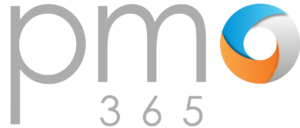Tracking progress in Agile projects can be tricky, especially when scope changes mid-sprint or stakeholders want visibility into whether the team is on track. While burn down charts are common, many teams are turning to a more informative tool: the burn up chart.
This simple yet powerful visual shows not just how much work has been done, but also how much remains, and how scope is changing along the way.
In this blog, we’ll explain what a burn up chart is, how it works, and why it might be the best choice for transparent, dynamic project reporting.
What is a burn up chart?
A burn up chart is a visual representation of project progress over time. It helps teams track two important dimensions:
-
Work completed (usually in story points, tasks, or hours)
-
Total project scope (which may change during delivery)
By plotting both metrics on the same chart, you get a clear view of how much has been delivered versus how much is left, and whether the team is on track to meet the goal.
Burn up chart vs burn down chart
Burn up and burn down charts may look similar at first glance, but they communicate progress in very different ways. Here is a side-by-side comparison:
| Feature | Burn Down Chart | Burn Up Chart |
|---|---|---|
| Tracks Work | Remaining work only | Both completed work and total scope |
| Scope Changes | Difficult to represent | Clearly visible |
| Interpretation | Less intuitive when changes occur | Easier to explain and understand |
| Preferred For | Fixed-scope sprints | Projects where scope may evolve |
Bottom line: Burn up charts are more transparent when scope isn’t static.
How to read a burn up chart
A burn up chart might look simple, but it has several core components that make it effective:
-
X-axis: Time (e.g. sprint dates or calendar days)
-
Y-axis: Total effort (e.g. story points)
-
Scope line: A horizontal or adjusted line showing total effort expected
-
Progress line: Shows how much work has been completed over time
When the progress line meets the scope line, the work is done.
Example use caseYour product team is building a mobile app with an estimated effort of 100 story points. You visualise the work using a burn up chart: Week 1: 15 points completed Week 2: 30 points completed Week 3: Scope increased to 120 points Week 4: 90 points completed The chart shows that progress is strong, but scope has increased. This gives stakeholders better insight into delivery reality than a burn down chart, which would only show remaining effort and could appear misleading. |
Tools that support burn up charts
Several tools make it easy to create and manage burn up charts. Common options include:
-
Jira (with plugins like Easy Agile or Advanced Roadmaps)
-
Azure DevOps
-
Excel / Google Sheets (for custom charts)
-
Smartsheet
-
Power BI
-
pmo365 (for integrated portfolio-level burn up tracking)
These tools often provide automation, reporting, and portfolio-wide visibility, making it easier to keep charts accurate and up to date.
Benefits of using burn up charts
Teams adopt burn up charts because they offer benefits beyond traditional progress tracking. Some of the most important include:
-
Transparency: Clearly shows the impact of scope changes
-
Motivation: Teams can see how much they’ve already achieved
-
Stakeholder confidence: A clear, easy-to-explain visualisation
-
Adaptability: Works well in fixed and evolving projects
-
Better forecasting: Trends help estimate completion dates more reliably
Best practices for burn up charts
Burn up charts are only as effective as the way they’re used. To get the most value, keep these best practices in mind:
-
Update frequently
Ideally daily or at least every sprint to keep the chart meaningful. -
Show scope changes clearly
Use distinct colours or annotations when scope increases or decreases. -
Use real effort metrics
Story points, hours, or item counts should be consistent across sprints. -
Align with stakeholders
Review the chart regularly with sponsors and product owners. -
Combine with other charts
Use alongside velocity charts or cumulative flow diagrams for deeper insights.
Common pitfalls to avoid
Teams often fall into traps when setting up or maintaining burn up charts. Here are common mistakes and how to avoid them:
| Pitfall | Impact | Fix |
|---|---|---|
| Not updating the chart regularly | Misleading data | Automate updates or schedule check-ins |
| Misrepresenting scope changes | Undermines trust | Keep a clear record of scope line adjustments |
| Using inconsistent metrics | Makes trends unreliable | Standardise estimation methods |
| No stakeholder engagement | Reduces value of insights | Include chart in sprint reviews or retrospectives |
Conclusion: visualise progress the smart way
Burn up charts offer a more holistic, transparent, and adaptive way to track Agile project progress. Especially when scope is likely to shift, they provide a clear path to understanding what’s really happening, helping your team stay on track and your stakeholders stay in the loop.
For Agile teams that value both delivery and clarity, the burn up chart is an essential tool.













